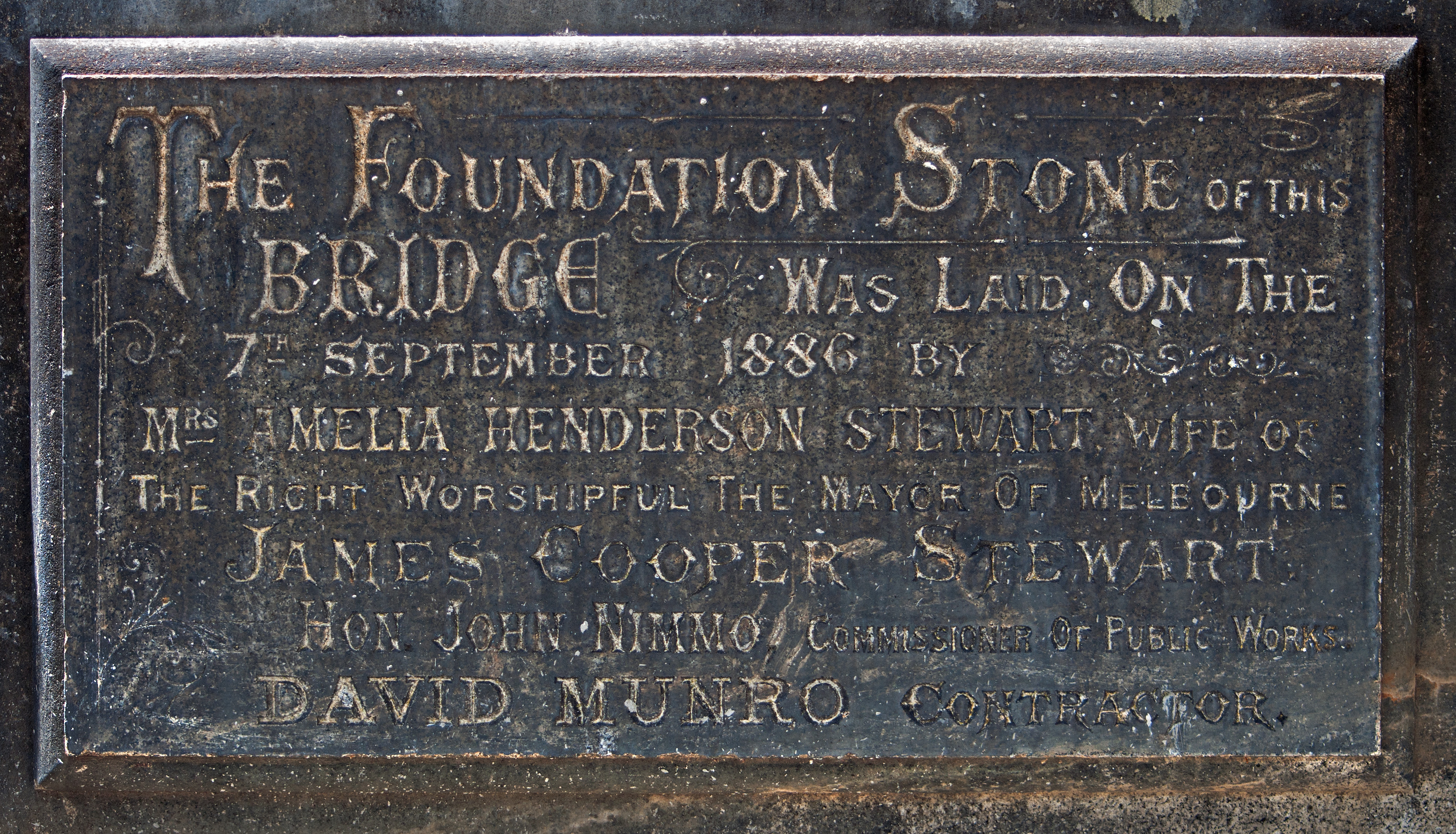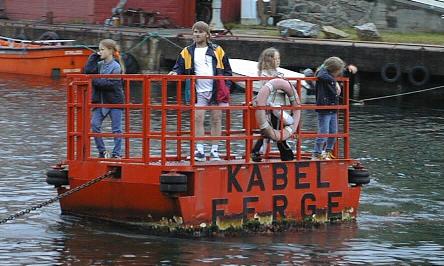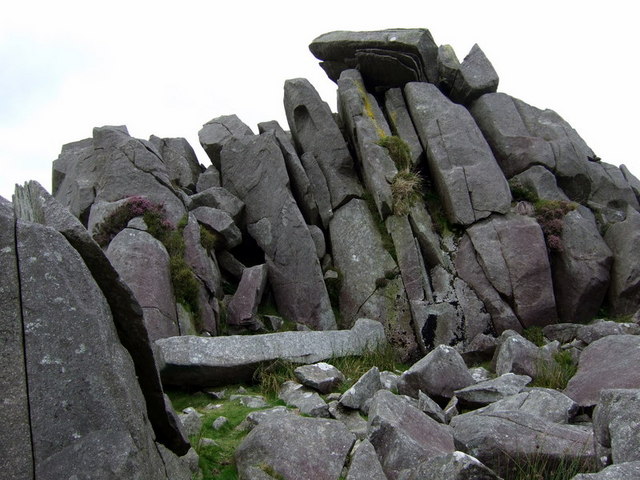|
Princes Bridge (Melbourne)
Princes Bridge, originally Prince's Bridge,, ''...he wished that it might be distinguished by the name of "Prince's Bridge," in honour of the Prince of Wales, whom he hoped would yet be the Sovereign of their colonies...'' is a bridge in central Melbourne, Australia that spans the Yarra River. It is built on the site of one of the oldest river crossings in the city, and forms a gateway into the central city from the south. The bridge connects Swanston Street on the north bank of the Yarra River to St Kilda Road on the south bank, and carries road, tram and pedestrian traffic. The present bridge was built in 1888 and is listed on the Victorian Heritage Register. Because of its position, Princes Bridge is often a focal point for celebratory events in Melbourne such as the Moomba Festival, New Year's Eve and many celebrations taking place on the Yarra River where it flows through the city. History First bridge When the first European settlers settled in Melbourne in 1835, ... [...More Info...] [...Related Items...] OR: [Wikipedia] [Google] [Baidu] |
Yarra River
The Yarra River or historically, the Yarra Yarra River, (Kulin languages: ''Berrern'', ''Birr-arrung'', ''Bay-ray-rung'', ''Birarang'', ''Birrarung'', and ''Wongete'') is a perennial river in south-central Victoria, Australia. The lower stretches of the Yarra are where Victoria's state capital Melbourne was established in 1835, and today metropolitan Greater Melbourne dominates and influences the landscape of its lower reaches. From its source in the Yarra Ranges, it flows west through the Yarra Valley which opens out into plains as it winds its way through Greater Melbourne before emptying into Hobsons Bay in northernmost Port Phillip Bay. The river has been a major food source and meeting place for Indigenous Australians for thousands of years. Shortly after the arrival of European settlers, land clearing forced the remaining Wurundjeri people into neighbouring territories and away from the river. Originally called ''Birrarung'' by the Wurundjeri, the current name was mis ... [...More Info...] [...Related Items...] OR: [Wikipedia] [Google] [Baidu] |
Cable Ferry
A cable ferry (including the terms chain ferry, swing ferry, floating bridge, or punt) is a ferry that is guided (and in many cases propelled) across a river or large body of water by cables connected to both shores. Early cable ferries often used either rope or steel chains, with the latter resulting in the alternative name of chain ferry. Both of these were largely replaced by wire cable by the late 19th century. Types There are three types of cable ferry: the reaction ferry, which uses the power of the river to tack across the current; the powered cable ferry, which uses engines or electric motors (e.g., the Canby Ferry in the U.S. State of Oregon) to wind itself across; and the hand-operated type, such as the Stratford-upon-Avon chain ferry in the UK and the Saugatuck Chain Ferry in Saugatuck, Michigan, United States. Powered cable ferries use powered wheels or drums on board the vessel to pull itself along by the cables. The chains or wire ropes can be used with a su ... [...More Info...] [...Related Items...] OR: [Wikipedia] [Google] [Baidu] |
Princes Bridge Railway Station
Princes Bridge was a Melbourne railway station built in 1859 and was the terminus for all Epping line and Hurstbridge line trains. The station was named after the adjacent Princes Bridge, which crosses the Yarra River. Originally Princes Bridge station was isolated from Flinders Street station, even though it was adjacent to it, sited just on the opposite side of Swanston Street. Some years later the railway tracks were extended under the street to join the two stations, and Princes Bridge slowly became amalgamated into the larger Flinders Street station. This process was completed in May 1997. History Originally known as Prince's Bridge (as was the bridge itself), the station was opened as the city terminus of the Melbourne and Suburban Railway Company line to Punt Road (Richmond) in 1859. Extended to Prahran in 1859 and Windsor in 1860, it formed today's Sandringham line. A small engine shed was built east of the station in 1859 by the company. A locomotive depot later rep ... [...More Info...] [...Related Items...] OR: [Wikipedia] [Google] [Baidu] |
Bluestone
Bluestone is a cultural or commercial name for a number of dimension or building stone varieties, including: * basalt in Victoria, Australia, and in New Zealand * dolerites in Tasmania, Australia; and in Britain (including Stonehenge) * feldspathic sandstone in the US and Canada * limestone in the Shenandoah Valley in the US, from the Hainaut quarries in Soignies, Belgium, and from quarries in County Carlow, County Galway and County Kilkenny in Ireland * slate in South Australia Stonehenge The term "bluestone" in Britain is used in a loose sense to cover all of the "foreign," not intrinsic, stones and rock debris at Stonehenge. It is a "convenience" label rather than a geological term, since at least 46 different rock types are represented. One of the most common rocks in the assemblage is known as Preseli Spotted Dolerite—a chemically altered igneous rock containing spots or clusters of secondary minerals replacing plagioclase feldspar. It is a medium grained dark and ... [...More Info...] [...Related Items...] OR: [Wikipedia] [Google] [Baidu] |
International Exhibition
A world's fair, also known as a universal exhibition or an expo, is a large international exhibition designed to showcase the achievements of nations. These exhibitions vary in character and are held in different parts of the world at a specific site for a period of time, typically between three and six months. The term "world's fair" is commonly used in the United States, while the French term, ("universal exhibition") is used in most of Europe and Asia; other terms include World Expo or Specialised Expo, with the word expo used for various types of exhibitions since at least 1958. Since the adoption of the 1928 Convention Relating to International Exhibitions, the Paris-based Bureau International des Expositions has served as an international sanctioning body for international exhibitions; four types of international exhibition are organised under its auspices: World Expos, Specialised Expos, Horticultural Expos (regulated by the International Association of Horticultural ... [...More Info...] [...Related Items...] OR: [Wikipedia] [Google] [Baidu] |
Sandridge Bridge
The Sandridge Bridge is a historic bridge, originally carrying a railway, over the Yarra River in Melbourne, Victoria, Australia. It runs diagonally to the river's banks and is long. In 2006 it was redeveloped as a pedestrian and cycle path featuring public art. It is the third bridge on the site and is listed on the Victorian Heritage Register. History The first bridge on the site was built in 1853 for the original Melbourne and Hobson's Bay Railway Company line to Sandridge from Flinders Street to Port Melbourne at Hobsons Bay on Port Phillip – the first railway in Australia to operate steam locomotives. In 1857 the St Kilda railway line had opened parallel to part of the line to Sandridge, and the original bridge was replaced in 1858 by a timber trestle bridge carrying two lines of rail traffic, with the tight curve of the original railway removed by rebuilding the bridge on a more oblique angle as seen today. The current bridge was designed by the Victorian Railway ... [...More Info...] [...Related Items...] OR: [Wikipedia] [Google] [Baidu] |
Queens Bridge (Melbourne)
The Queen's Bridge is a historic road bridge over the Yarra River in Melbourne, Victoria, Australia. The bridge was built in 1889 and has five wrought iron plate girder spans, and is listed on the Victorian Heritage Register. The bridge was built by contractor David Munro, and replaced a timber footbridge built in 1860. The bridge is a very flat arch, and has five spans constructed of wrought iron plate girders. The bridge rests on iron cylinders filled with concrete, in groups of eight, with arched bracing between. It connects Market Street and William Street on the north bank to Queensbridge Street to the south. Trams on route 58 also cross the bridge. In 1910, Houdini leapt from the bridge while shackled and escaped in less than one minute. Yarra Falls Queens Bridge marks the location of the Yarra Falls, a waterfall that had existed on the Yarra River. The Aboriginal clans of Woiwurrung and Boon wurrung called the falls ''Yarra Yarra'' and used it as a crossing point ... [...More Info...] [...Related Items...] OR: [Wikipedia] [Google] [Baidu] |
Langlands Foundry
Langlands foundry was Melbourne's first foundry and iron shipbuilder (1842–97). It was established in 1842 (only 8 years after the founding of the colony) by two Scottish immigrants, Robert Langlands (son of John Langlands, baker, of Dundee) and Thomas Fulton (ironmaster) (1813–1859) who had formed a partnership before emigrating. the business was known as the 'Langlands Foundry Co'. Henry Langlands (1794-1863), left Scotland in 1846 with his wife Christian, née Thoms. and five surviving children to join his brother Robert. By the time he arrived in early January 1847 the partnership of Langlands and Fulton had dissolved as Fulton had gone off to establish his own works, and the two brothers took over ownership of Langlands foundry. Several years later Robert retired and Henry became sole proprietor. The foundry was originally located on Flinders Lane between King and Spencer Streets. Their sole machine tool, when they commenced business, was a small slide rest lathe turned ... [...More Info...] [...Related Items...] OR: [Wikipedia] [Google] [Baidu] |
Percy Grainger
Percy Aldridge Grainger (born George Percy Grainger; 8 July 188220 February 1961) was an Australian-born composer, arranger and pianist who lived in the United States from 1914 and became an American citizen in 1918. In the course of a long and innovative career he played a prominent role in the revival of interest in British folk music in the early years of the 20th century. Although much of his work was experimental and unusual, the piece with which he is most generally associated is his piano arrangement of the folk-dance tune " Country Gardens". Grainger left Australia at the age of 13 to attend the Hoch Conservatory in Frankfurt. Between 1901 and 1914 he was based in London, where he established himself first as a society pianist and later as a concert performer, composer and collector of original folk melodies. As his reputation grew he met many of the significant figures in European music, forming important friendships with Frederick Delius and Edvard Grieg. He became a ... [...More Info...] [...Related Items...] OR: [Wikipedia] [Google] [Baidu] |
Edward VII
Edward VII (Albert Edward; 9 November 1841 – 6 May 1910) was King of the United Kingdom of Great Britain and Ireland and Emperor of India, from 22 January 1901 until his death in 1910. The second child and eldest son of Queen Victoria and Prince Albert of Saxe-Coburg and Gotha, and nicknamed "Bertie", Edward was related to royalty throughout Europe. He was Prince of Wales and heir apparent to the British throne for almost 60 years. During the long reign of his mother, he was largely excluded from political influence and came to personify the fashionable, leisured elite. He travelled throughout Britain performing ceremonial public duties and represented Britain on visits abroad. His tours of North America in 1860 and of the Indian subcontinent in 1875 proved popular successes, but despite public approval, his reputation as a playboy prince soured his relationship with his mother. As king, Edward played a role in the modernisation of the British Home Fleet and the reorganis ... [...More Info...] [...Related Items...] OR: [Wikipedia] [Google] [Baidu] |
David Lennox
David Lennox (1788 – 12 November 1873) was a Scottish-Australian bridge builder and master stonemason born in Ayr, Scotland. Personal details Trained as a stonemason, Lennox worked on Telford's Menai Suspension Bridge at Anglesey in Wales and on Over Bridge at Gloucester before emigrating to Australia following the death of his wife.Lennox Bridge – Lapstone Hill , Blue Mountains Info ' He arrived in August 1832 aboard the ship Florentia. Prior to this time, the young colony of New South Wales had no skilled stonemasons, and so it was almost fate that a chance meeting with the Su ... [...More Info...] [...Related Items...] OR: [Wikipedia] [Google] [Baidu] |
Charles La Trobe
Charles la Trobe, CB (20 March 18014 December 1875), commonly Latrobe, was appointed in 1839 superintendent of the Port Phillip District of New South Wales and, after the establishment in 1851 of the colony of Victoria (now a state of Australia), he became its first lieutenant-governor. La Trobe was a strong supporter of religious, cultural and educational institutions. During his time as superintendent and lieutenant-governor he oversaw the establishment of the Botanic Gardens, and provided leadership and support to the formation of entities such as the Mechanic's Institute, the Royal Melbourne Hospital, the Royal Philharmonic, the Melbourne Cricket Ground and the University of Melbourne. La Trobe was the nephew of British architect Benjamin Henry Latrobe. Early life Charles La Trobe was born in London, the son of Christian Ignatius Latrobe, a leader of the Moravian Church, from a family of French Huguenot descent, whose mother was a member of the Moravian Church born in the ... [...More Info...] [...Related Items...] OR: [Wikipedia] [Google] [Baidu] |







.jpg)

